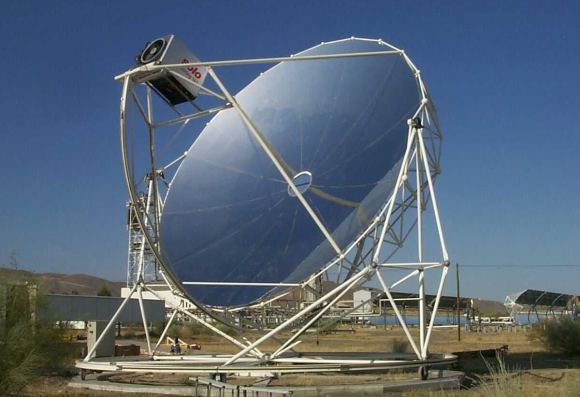Bringing Light to the Moon’s Permanently Shadowed Craters
Key Takeaway:
Researchers from Texas A&M Department of Aerospace Engineering, in collaboration with NASA’s Langley Research Centre, are developing solar reflectors to harness solar energy in the Moon’s permanently shadowed craters. These reflectors, perched on crater rims, redirect sunlight into the craters where it can be used to harvest water resources. The use of self-morphing materials allows the reflectors to adapt to the extreme temperature fluctuations on the Moon.
Summary:
- Permanently shadowed craters on the Moon contain valuable water ice deposits.
- Solar energy is abundant on the Moon, but not available in its polar craters.
- Researchers at Texas A&M are developing solar reflectors to harness sunlight in these craters.
- The reflectors, perched on crater rims, redirect sunlight into the crater where it can be used to harvest water.
- Self-morphing materials are utilized to allow the reflectors to adapt to extreme temperature changes on the Moon.
- Harnessing water resources on the Moon is vital for sustainable human habitation and exploration efforts.

Bringing Light to the Moon’s Permanently Shadowed Craters
The Moon’s polar regions host a treasure trove hidden within its permanently shadowed craters: ancient ice. With ambitions to establish a sustainable human presence on the Moon, the prospect of utilizing these water ice deposits becomes increasingly captivating. However, there lies a significant challenge: the Sun’s rays never reach the depths of these craters, leaving them covered in perpetual darkness.
According to Dr. Darren Hartl, an associate professor of aerospace engineering at Texas A&M University, the solution lies in solar collectors strategically positioned on the crater’s rim. Hartl and his team are pioneering efforts to harness the abundant solar energy available on the Moon by redirecting sunlight into its darkest corners. He explains, “If you perch a reflector on the rim of a crater, and you have a collector at the center of the crater that receives light from the sun, you are able to harness the solar energy.”
The idea of using solar reflectors to light up the Moon’s permanently dark craters is being put into practice. Researchers from Texas A&M’s Department of Aerospace Engineering are working together with NASA’s Langley Research Centre on this project. They plan to use reflectors alongside receivers placed inside the craters. This method could provide a way to harness solar energy in these dark areas.

The Role of Self-Morphing Materials
One of the key innovations driving this research is the utilization of self-morphing materials. These materials, inspired by natural systems such as muscles and tendons, possess the remarkable ability to adapt their shape in response to environmental stimuli. Dr. Hartl’s team is exploring the use of shape memory alloys (SMA) to create reflectors that can withstand the harsh conditions of lunar terrain.
As Dr. Hartl elaborates, “During space missions, astronauts may need to deploy a large parabolic reflector from a relatively small and light landing system. That’s where we come in. We are looking at using shape memory materials that will change the shape of the reflector in response to system temperature changes.”
Challenges and Solutions
Operating on the Moon presents a multitude of challenges, chief among them being the extreme temperature differentials experienced between day and night. From scorching highs of 121 Celsius (250 F) to bone-chilling lows of -250 C (-415 F), lunar conditions demand materials capable of enduring such extremes.
Dr. Hartl’s expertise in advanced multifunction materials proves invaluable in tackling these challenges. By incorporating shape-shifting metals that adjust their heat rejection based on temperature fluctuations, the research team aims to create robust solutions capable of withstanding lunar conditions.
“Our proposed solutions incorporate shape-shifting metals that adjust their own heat rejection based on how hot or cold they are, so it solves the problem for us,” says Hartl.
Implications for Lunar Exploration
As humanity sets its sights on the Moon as the next frontier for human habitation and exploration, the importance of harnessing its resources cannot be overstated. Water, in particular, holds immense value, serving not only as a vital resource for sustenance but also as a potential source of oxygen and hydrogen for fuel.
Efficiently extracting and managing these resources will be crucial for the success of initiatives like Artemis and future lunar exploration endeavors. The development of advanced technologies tailored to the lunar environment, such as self-morphing solar reflectors, represents a significant step towards achieving this goal.
In conclusion, lighting up the Moon’s permanently shadowed craters is crucial. It’s not just about scientific interest. It’s also key to human expansion into space. Scientists and engineers are working together. Their innovative efforts aim to create a sustainable and prosperous future beyond Earth.




